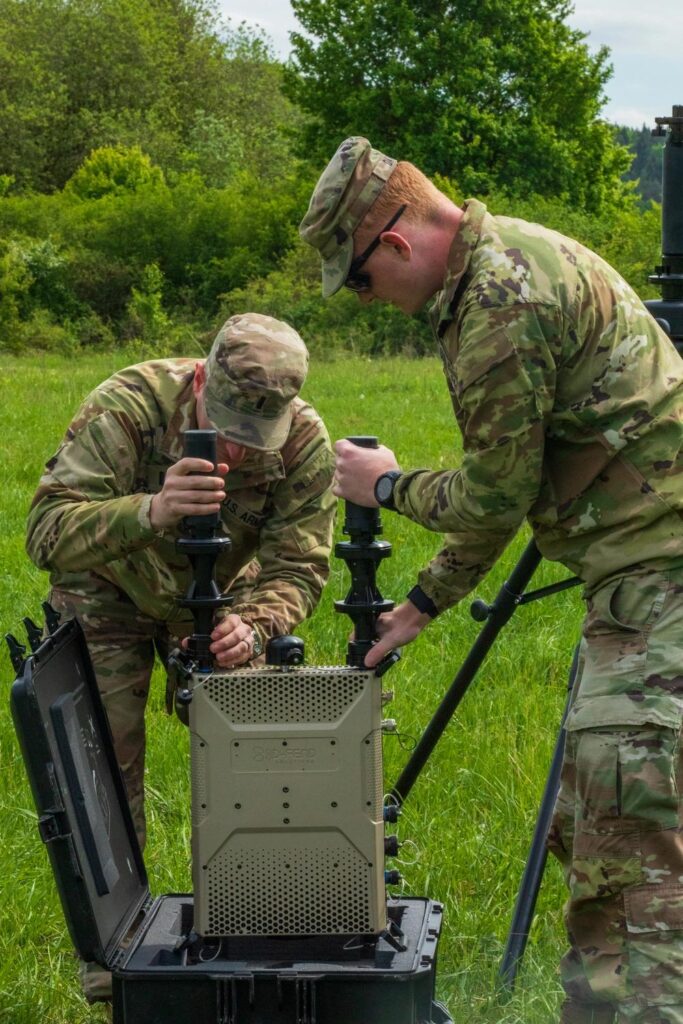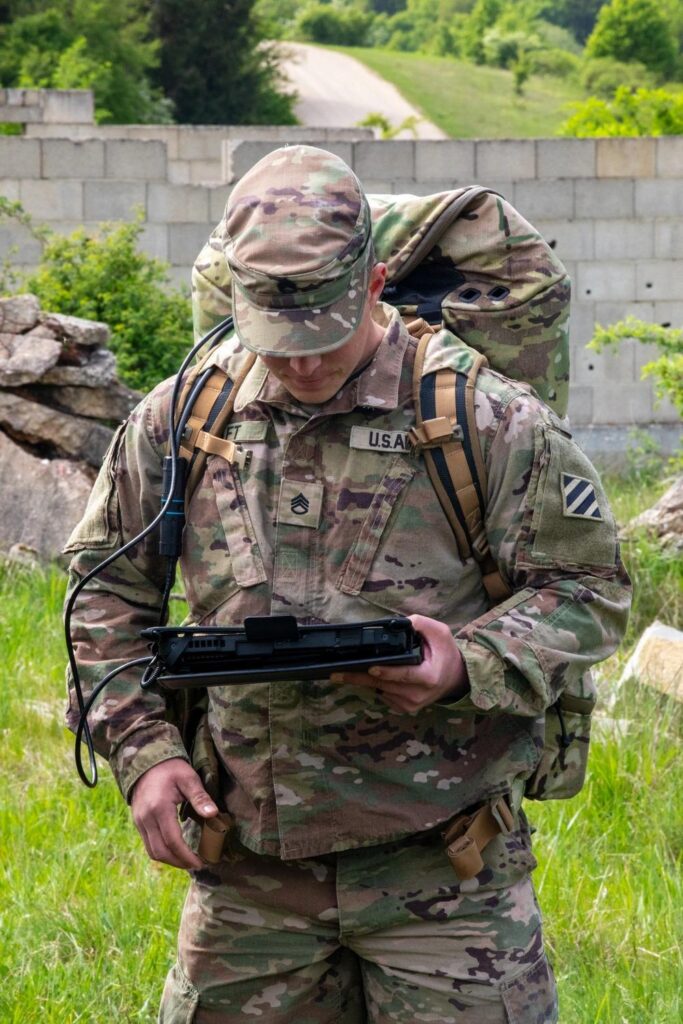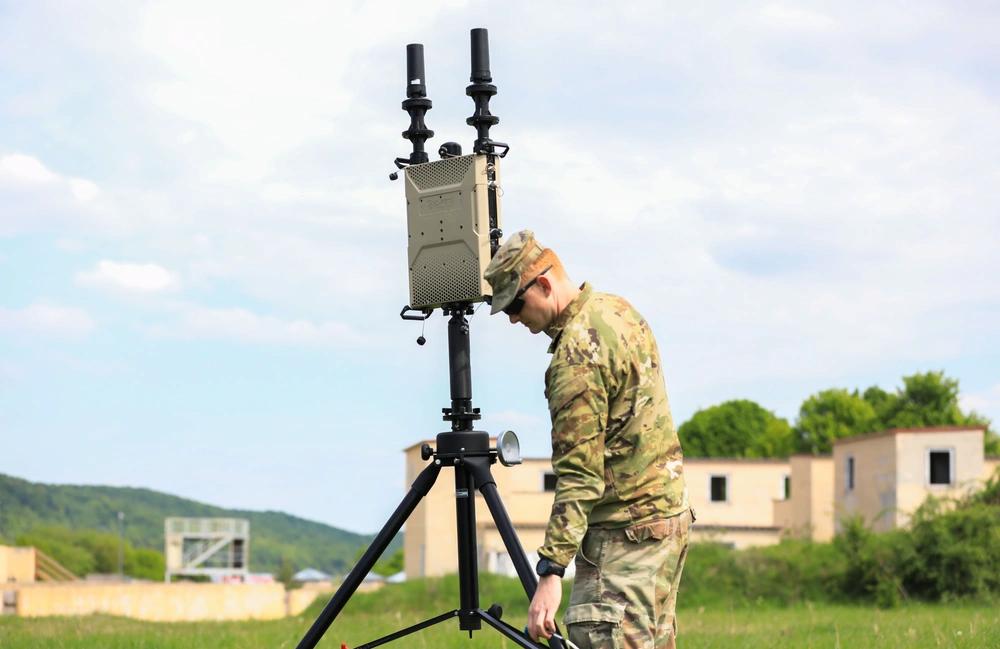At the Joint Multinational Readiness Center in Hohenfels, Germany, the U.S. Army’s Combined Resolve 25-02 exercise set the stage for rapid innovation and real-world training on emerging technologies.
A major recurring multinational military exercise that brings together Army units and allied forces to train in complex, multi-domain battlefield scenarios and enhance operational readiness, this year the exercise served double-duty as a proving ground for the Army’s “Transforming in Contact” (TiC) initiative.
The goal: to assess how force structure and tactics align with the latest advancements in electronic warfare (EW) and counter-unmanned aerial systems (C-UAS).
At this exercise, RF cyber-takeoff technology showed its value not only as a tactical asset, but also as a force multiplier.
D-Fend Solutions and its EnforceAir system’s participation in Operation Combined Resolve 25-02 received extensive coverage on official U.S. military websites and social media platforms. Much of the information and observations in this article are drawn from these public domain sources, including video interviews and reports published by these military channels.
Drones in Modern Warfare And The Army’s Response
Modern conflicts have increasingly become defined by the proliferation of unmanned aerial systems (UAS) or drones. Once in the domain of hobbyists, combatants now weaponize them and use them for everything from reconnaissance and targeting to direct attacks. The Army has plans to directly respond to this threat through its “Transforming in Contact” (TiC) initiative.
The Tic: Accelerating Adoption of Emerging Technologies
Spearheaded by Army Chief of Staff Gen. Randy George, this sweeping, top-priority effort aims to fundamentally change how the Army procures, fields and experiments with emerging capabilities—with a focus on speed, flexibility and operational relevance. Army leadership designed it to rapidly adapt Army organizations and deliver new technology directly into the hands of soldiers.

Disclaimer: The appearance of U.S. Department of Defense (DoD) visual information does not imply or constitute DoD endorsement.
The Commercial-Off-The-Shelf Difference
TiC leverages commercial-off-the-shelf (COTS) products and prototype systems including electronic warfare (EW), counter-unmanned aerial systems (C-UAS), advanced networking, robotics, and autonomy. It allows units to quickly test, integrate and adapt new technologies during realistic training scenarios and operational deployments.
TiC Evolution: From Light Infantry To Armored and Stryker BCTs
The first phase of the initiative, TiC 1.0, focused on light infantry brigades. They tested hundreds of new systems during intensive combat training center rotations. Building on the lessons learned, the Army has now expanded to TiC 2.0, which will include armored and Stryker brigade combat teams (BCTs), divisions and specialized units across the National Guard and Reserves.
Bottom-Up Feedback Loop
In addition to agile funding and capability-based portfolios, its bottom-up feedback loop truly sets TiC apart from other programs. Soldiers can communicate real-world experiences and insights rapidly communicated from the field to Army leadership. These comms directly influence design, material solutions and force structure updates.
The Combined Resolve 25-02 exercise supported the TiC initiative by focusing on how force structure and tactics must evolve alongside UAS technology..
A Multinational Proving Ground for Emerging Tech
With over 4,000 participants from nations including the United States, Poland, Italy and Kosovo, Combined Resolve 25-02 aimed to enhance interoperability and refine combat readiness in a dynamic security environment. As such, it also represented a critical investment in NATO’s collective defense and the operational readiness of allied and partner forces.
Building off the innovative success of light brigade combat teams, the 3rd Infantry Division’s (3ID) 1st Brigade became one of the first mechanized units to undergo TIC. This team performed the first TiC rotation at Hohenfels. It rapidly fielded commercial off-the-shelf (COTS) drone technologies, as well as drone countermeasures, including D-Fend Solutions’ EnforceAir2, to stay agile on the modern battlefield.
EnforceAir2: Advanced Counter-Drone Technology
Unlike traditional C-UAS measures that rely on jamming or kinetic takedowns, EnforceAir2 leverages advanced radio frequency (RF) cyber-takeover technology. This allows operators to detect, identify and assume control of hostile drones, redirecting or grounding them safely without disrupting other communications or risking collateral damage.
Users can deploy the system in tactical, vehicular, stationary, or man-portable configurations for rapid adaptation to battlefield needs. Its software-defined radio (SDR) and omni-directional antennas provide 360-degree perimeter security that allow it to handle multiple drone threats simultaneously. The intuitive, ruggedized tablet interface enables operators to monitor, classify and neutralize threats with a simple tap. This ensures real-time situational awareness and response.
Real-World Feedback: Soldiers Speak

Disclaimer: The appearance of U.S. Department of Defense (DoD) visual information does not imply or constitute DoD endorsement.
During Combined Resolve 25-02, 3rd Infantry Division soldiers trained extensively with EnforceAir2 to defend against UAS. They created a protection plan for units to detect UAS threats, return drones to point-of-origin, and take over drones in order to ground them.
They set up the system in stationary positions, in vehicle mounted configurations, and as a portable backpack. Soldiers were able to detect simulated enemy drones, take control and safely land or return them to their point of origin without firing a shot.
U.S. Army personnel participating in video interviews on military websites described how EnforceAir2 enabled a safer approach to countering drone threats. Rather than relying on traditional kinetic methods, such as shooting down drones—which can pose additional hazards—soldiers noted that the system allows operators to take control of hostile drones and land them safely, mitigating risks to personnel and equipment. This capability was highlighted as a significant advancement in battlefield protection and operational flexibility.
The integration of EnforceAir2 into Army training was also emphasized as a seamless fit with evolving electronic warfare doctrine and modern battlefield tactics. According to these accounts, the system was recognized as representing a new stage in how military forces implement countermeasures and manage threats from unmanned aerial systems, underscoring its role in shaping the next generation of operational capabilities.battlefield tactics. As U.S. Army Sgt. Drew Hammond noted, “It’s the next evolution of how fires is implemented on the battlefield.”
The Human Element: D-Fend Solutions’ Expert Support Team
The EnforceAir2 training and drill at Combined Resolve 25-02 was supported by a dedicated team from D-Fend Solutions, who provided on-site expertise throughout the exercise. Members of the team led hands-on training sessions for U.S. Army personnel, ensuring soldiers not only understood the system’s technical features but could also operate it effectively under demanding conditions.
The D-Fend Solutions team also provided ongoing oversight and support during the deployment. Their presence helped bring advanced counter-drone technology and its real-world application onto the modern battlefield, enabling seamless integration of EnforceAir2 into the operational scenarios.
The Future of Battlefield Security
As drone threats continue to evolve, too must the technologies and tactics designed to counter them. D-Fend Solutions’ EnforceAir2 continues to lead the way. The presence of the system at Combined Resolve 25-02 is a testament to the power of innovation, expertise and collaboration in securing the modern battlefield. The system’s role at the exercise showed how soldiers and commanders can maintain control, safety, and operational continuity in the face of evolving threats.
Combined Resolve 25-02 illustrated that the future of warfare hinges, in part, on effective C-UAS solutions. The Army is shaping battlefield protection through its TiC vision, deployment of COTS technologies and collaboration exercises with companies like D-Fend Solutions. Through this testing and rapid adoption, the Army will undoubtedly remain a leaner, more lethal force, ready for the counterdrone challenges of tomorrow’s battlefields.

